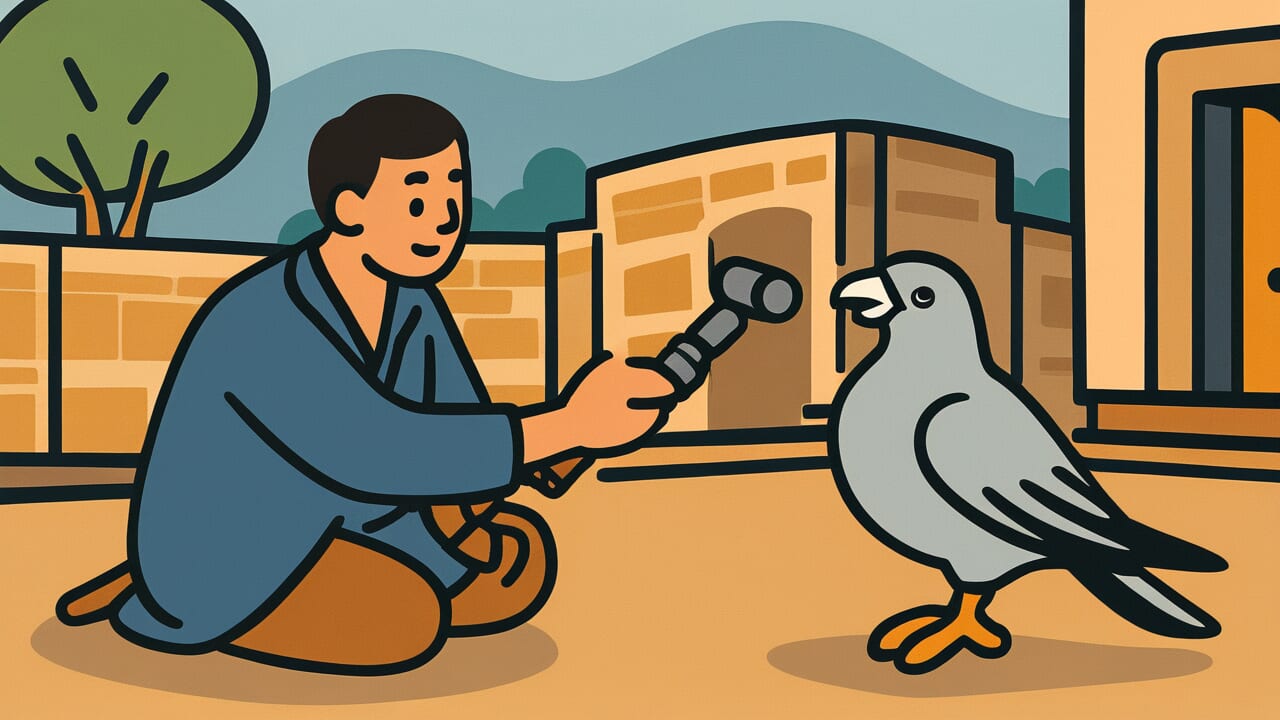How to Read “A falconer’s child tames pigeons”
Takajō no ko wa hato wo narasu
Meaning of “A falconer’s child tames pigeons”
This proverb teaches that children naturally acquire skills and instincts by watching their parents work every day, even without formal instruction.
Even a falconer’s child can tame pigeons before starting serious training. This happens not because the parent taught them directly, but because they absorbed techniques by watching daily.
The child unconsciously learns the parent’s movements and how to handle birds. This natural learning process happens through everyday observation.
People use this proverb when children follow family businesses or show their parents’ professional influence. It also emphasizes how environment shapes people.
Today, this applies beyond traditional crafts to all fields. It shows the powerful way children learn from their parents’ example.
The proverb celebrates the natural human learning process. Skills and attitudes pass down through daily observation and imitation, even before formal education begins.
Origin and Etymology
No clear historical records document this proverb’s origin. However, the phrase itself offers interesting insights.
A falconer is a specialist who trains hawks for hunting. In Japan, falconers played important roles from the Heian period through samurai society.
During the Edo period, the shogun employed official falconers. This was a highly skilled profession requiring advanced techniques.
Taming birds of prey to obey human commands demands years of experience and delicate skill.
The proverb’s cleverness lies in a key detail. The falconer’s child doesn’t start with hawks but with pigeons.
Pigeons are much easier to handle than hawks. Yet the falconer’s child can tame them at a young age.
This happens because the child watches the parent work daily. They naturally absorb basic bird-handling skills and instincts.
Even young children can tame pigeons, something ordinary children cannot do. This demonstrates their absorbed knowledge.
The expression vividly captures children’s learning ability. It shows how specialized skills naturally pass between generations through observation.
Usage Examples
- That chef’s daughter is only in elementary school, but her knife skills are amazing. A falconer’s child tames pigeons, as they say.
- My father was a carpenter, so I naturally learned woodworking as a child. A falconer’s child tames pigeons, I suppose.
Universal Wisdom
This proverb reveals a universal truth about learning: the tremendous power of environment. We absorb far more from repeated actions we witness than from verbal instruction.
Children watch every move their parents make. This isn’t conscious observation but natural learning woven into daily life.
The falconer’s child can tame pigeons not from special talent. They’ve watched their parent face hawks daily, handle birds, and interact with living creatures.
These accumulated observations crystallize into skill without the child noticing. The learning happens automatically through exposure.
This phenomenon extends beyond technical skills. Children unconsciously learn their parents’ work attitudes, approaches to challenges, and ways of treating people.
How parents live influences children far more than saying “do this.” Actions speak louder than words in shaping the next generation.
Our ancestors understood this human essence. Education doesn’t happen only in classrooms.
Children learn about life through daily living, watching adults’ backs. This proverb captures the fundamental nature of human growth.
When AI Hears This
This proverb contains one of learning science’s most important discoveries: the golden ratio of “current ability plus twenty percent.”
Vygotsky’s Zone of Proximal Development theory proves something crucial. People grow most efficiently when tackling tasks they cannot do alone but can accomplish with slight help.
The falconer’s child taming pigeons perfectly demonstrates this zone. Attempting hawks immediately would cause failure. Already-tamed small birds would provide no growth.
Pigeons offer intermediate difficulty that maximizes the child’s ability development. This optimal challenge level drives learning forward.
Interestingly, this proverb also demonstrates “environmental power.” The falconer’s home contains tools, opportunities to observe techniques, and advice when mistakes happen.
This means a support system called “scaffolding” naturally exists. Modern educational research shows this scaffolding, properly placed and gradually removed, creates independent learners.
The proverb expresses educational psychology’s core principle in one phrase. When difficulty settings and environmental support align, people acquire expertise most efficiently.
Lessons for Today
This proverb teaches modern people an important awareness: you are someone’s role model, whether you realize it or not.
If you’re a parent, your children watch your actions more than your words. If you’re a manager, your subordinates learn much from your work attitude.
If you’re a senior colleague, juniors watch your back and try to grow. We constantly serve as learning models for others, even unconsciously.
Therefore, you don’t need perfection, but strive for sincerity. Your genuine engagement with work, your stance facing difficulties, your consideration for others matter most.
These daily accumulations naturally transmit to people around you. Your consistent behavior teaches more than any lecture could.
Simultaneously, this proverb offers hope to us as learners. If you’re near someone you respect, that alone creates tremendous learning opportunities.
Even without special instruction, observing that person’s work and simply being nearby ensures your growth. Trust the power of environment.
Place yourself near good role models. This is the best method for elevating yourself and developing your abilities.



Comments